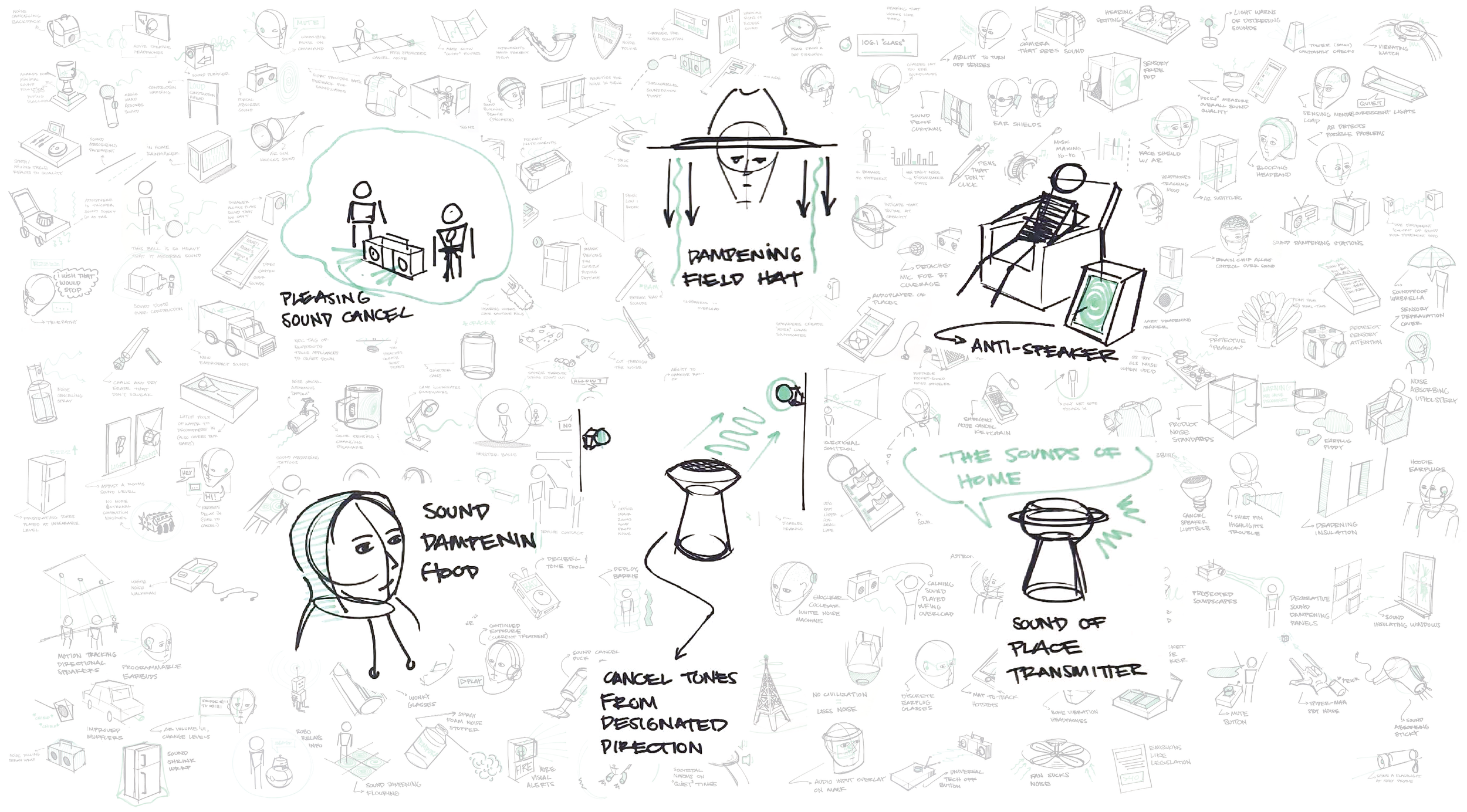
Soundscapes for Auditory Sensitivity
A project showcasing every stage of the design process.
Research nominated for presentation at the National Conference for Undergraduate Research (NCUR 2024). See the book.
What: Design a Tool that Minimizes Auditory Overload for Hypersensitive Individuals
Auditory overload happens when an individual takes too much auditory stimulation and can lead to physical pain, increased anxiety, and even panic attacks.
An individual may be hypersensitive as a result of many unique neurological differences or medical conditions, and each person will have varying levels of reaction to stimuli.
Background
Neurodiversity is a term used to describe the range of differences in individuals’ brain function and behavioral traits. The concept is most commonly referenced as a spectrum when talking about ASD, though many characteristics are shared throughout different neurotypes. “If you’ve met one person with autism, you’ve met one person with autism.” No two people have the same brain function, and as such all will need different design considerations.
After building a better understanding of the space as a whole, the project narrowed down to focus on sensory sensitivities. This shift meant looking further into how neurodivergent people may interact with the products in their lives specifically through the lenses of touch, sight, and sound.
I started by looking for commonalities in the ways neurodivergent individuals interact with different materials and textures through touch. In collaboration with an Autism support group on campus, I ran a workshop in which we ranked several materials on separate scales. Initially, I asked participants for their opinions on each and we gradually worked towards working as a group to categorize and rank each. While actual results from the workshop were rather inconclusive, this helped me better understand how similarities in such a varied group could be found. This is hugely important at this point as the latter stages of the design process will require finding enough similarities to design for.
Moving into Ideation
Selected Direction
Helmholtz Resonators work with a similar principle to the noise produced from blowing over a glass bottle. The key difference is that they can also be used to absorb and cancel sound instead of amplify it.
What are Helmholtz Resonators?
Resonators capture soundwaves at the frequency they are tuned for.
Then they bounce an “anti-wave” back, canceling the recieved frequency.
Then they bounce an “anti-wave” back, canceling the recieved frequency.
For the product to have the capacity to change the soundscape of a small to medium-sized room, it will need to house many resonators. Through iteration, I found that an ellipsoid shape would hold many of these forms without sacrificing much floor space.
For the resonators to work though they’ll need to be more than just a hole in the material. As they function similarly to blowing air over a glass bottle, the form needs two separate diameter holes that line up. I decided to do this by drilling the larger hole in the “core” and the smaller hole from a sort of shell that forms to the outside. This shell will be made from bent plywood as the object’s function is to change the soundscape of rooms a user frequents in their home. As such, the material choice is meant to mimic some aspects of furniture.
At first, I attempted to wet the veneer and bend it over the form, but this didn’t work. Vacuum bagging the veneer over the form was also a failure.
I found that I needed to change the form from having two curves to only one to get a successful final shell.
Lastly, I machined the foam innercore with a CNC in four parts, assembled after the fact. Once the core and shell were cohesive I drilled the resonator holes.
The final product allows users to subtly alter the soundscape of a room, quieting the background sounds that most people miss. The resonators address a range of frequencies, without the need for any electronic components.































